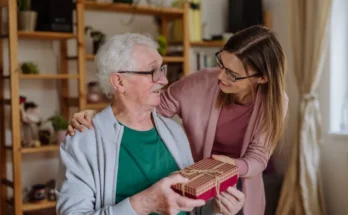Gifts have long held a special place in human culture. From ancient rituals to modern birthdays, giving is not just a tradition—it’s a way of speaking without words. A gift, at its best, is more than a token. It’s a reflection of thought, memory, and emotion. It says, “I see you,” “I appreciate you,” or sometimes, simply, “You matter.”
We often associate gifts with holidays, celebrations, or milestones, but their real power lies in the quiet, everyday moments—when giving becomes a language of connection. So, what truly makes a gift meaningful? And why do we, as humans, feel such joy in both giving and receiving?
Let’s explore the deeper side of gifts and how they shape our relationships and reflect our inner worlds.
The Emotional Anatomy of a Gift:
-
Thoughtfulness Over Price
The most memorable gifts are rarely the most expensive. They’re the ones wrapped in understanding. A well-worn book by a favorite author, a childhood photo restored and framed, a handwritten letter—all speak louder than diamond necklaces or luxury gadgets. Why? Because they show presence, not just purchase.
Thoughtfulness is the soul of gifting. It requires listening, observing, and remembering. It’s noticing when someone mentions a dream, a fear, or a simple favorite, and then honoring it later through a gesture that says, “I heard you.”
A gift is a mirror that reflects the giver’s attention and the receiver’s uniqueness.
-
The Intimacy of Surprise
There’s a certain magic in unexpected gifts. No calendar prompt. No holiday reminder. Just a spontaneous gesture that catches someone off-guard in the best way. A surprise gift feels different—it reminds us that love and kindness don’t need a reason.
Even the smallest surprise can brighten someone’s day. A favorite coffee left at their desk. Flowers on a gloomy Monday. A message tucked into a lunchbox. These moments linger in memory not because of what was given, but because of the feeling they brought.
Cultural Roots of Gift-Giving:
-
A Universal Human Tradition
From East to West, gift-giving has existed as long as humanity itself. Ancient Egyptians buried their loved ones with precious items to accompany them into the afterlife. In Japanese culture, gifts are exchanged with careful etiquette and deep symbolism. Indigenous communities use gift exchanges to strengthen ties and mark sacred ceremonies.
Gifting transcends time, geography, and language. It is a universal human instinct—to give as a way of expressing love, gratitude, respect, and even forgiveness.
In many cultures, the act of giving holds more importance than the gift itself. It’s not about what’s in the box, but what’s in the heart behind it.
-
Sacred and Ceremonial Offerings
Gifts are not always given between people—they are often extended to the divine. Offerings in temples, donations to the poor, or rituals that include symbolic items are forms of spiritual gifting. These acts are rooted in humility and devotion.
In these contexts, a gift is an acknowledgment of something greater than ourselves. It’s a way to give thanks, seek blessings, or show reverence. Thus, gifting becomes not just a social act, but a sacred one.
The Psychology of Giving:
-
Why We Love to Give
It might seem counterintuitive, but science confirms what the soul already knows—giving feels better than receiving. When we give, our brains release oxytocin, dopamine, and serotonin—the chemicals responsible for happiness and connection.
Giving affirms our place in someone’s life. It creates a sense of purpose and deepens relationships. It’s one of the few actions where the joy of the giver often matches, or even surpasses, that of the receiver.
This is why charitable giving, volunteer work, and acts of generosity bring such lasting fulfillment. In giving, we are reminded of our ability to make a difference.
-
Gifts as Emotional Currency
In many ways, gifts function as emotional currency. They build bridges, heal rifts, celebrate bonds, and sometimes, communicate what words cannot.
A bouquet can be an apology. A keepsake can say “I miss you.” A small charm can offer protection or hope. These gestures help us navigate complex feelings, especially when conversation is difficult.
A gift can carry the weight of silence or the lightness of joy—both are meaningful.
The Art of Receiving:
-
Gratitude
Receiving with grace is just as important as giving with thought. Gratitude turns a simple moment into a sacred one. It completes the loop between giver and receiver.
Many people struggle to receive. They downplay, deflect, or feel undeserving. But true gratitude is not about the size of the gift—it’s about the willingness to accept love in all its forms.
Whether it’s a physical present, a kind word, or a helping hand, saying “thank you” is a powerful act of connection.
-
What Gifts Reveal About Us
What we give—and how we respond to gifts—often reflects our values, insecurities, or even our love languages. Some people gift extravagantly as a way of expressing affection. Others prefer simplicity and meaning. Some keep every gift they’ve ever received; others cherish the memory more than the object.
Paying attention to these patterns can offer insight into ourselves and those around us. It deepens understanding and fosters empathy.
Gifts That Aren’t Things:
-
Time, Presence, and Kindness
Not all gifts come wrapped in ribbons. Sometimes, the greatest gift is time. In a busy world, choosing to be present—really present—is rare and powerful. Listening without distraction. Sitting with someone in their pain. Celebrating their wins as if they were your own.
Your presence is a gift. Your attention is a treasure.
And then there’s kindness—random, free, and deeply impactful. A kind gesture can outshine the fanciest wrapping paper. It’s a reminder that gifts are not about what we give, but how we give.
-
The Legacy of Giving
Gifts can create legacies. A donated library. A scholarship in someone’s name. A family tradition passed down through generations. These are gifts that ripple far beyond the moment—they shape futures.
In the end, we won’t be remembered for how many gifts we gave, but for how our giving made others feel.
Conclusion:
Gifts are more than objects. They are expressions of who we are and how we connect. They carry our affection, our memories, our gratitude, and sometimes, our hopes.
Whether it’s a diamond ring or a dandelion picked on a walk, what matters is the meaning behind it. The thought. The intention. The love.
In a world often focused on getting, let us remember the beauty of giving—and receiving—with open hearts.
Because in the quiet act of offering something of ourselves, we say the loudest things.




